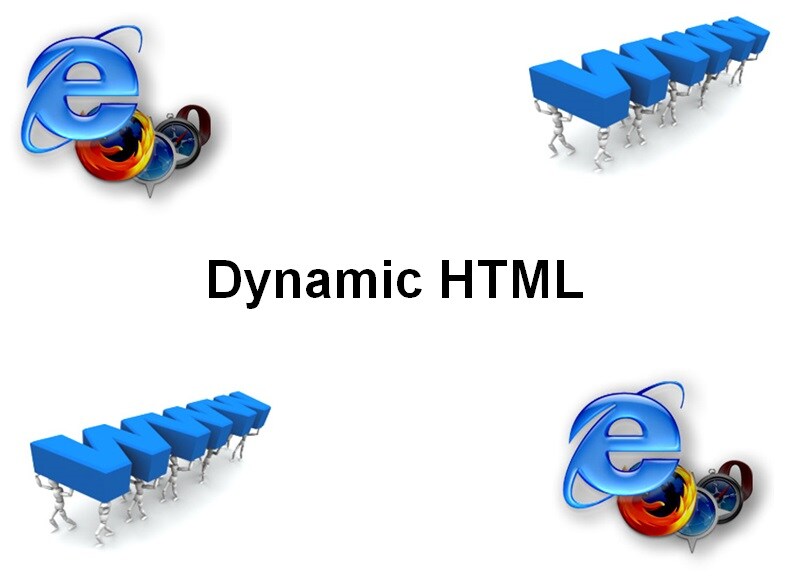-
Learning by doing
-
Trainers with practical experience
-
Classroom training
-
Detailed course material
-
Clear content description
-
Tailormade content possible
-
Training that proceeds
-
Small groups
In the course Dynamic HTML you will learn to create interactive and dynamic web pages. HTML is not a programming language but a static markup language. HTML in itself is not dynamic, but by combining HTML with JavaScript and CSS we can get dynamic pages. The course is based on pure JavaScript, HTML and CSS without using a framework such as Angular, React or Vue.
The course starts with an overview of the HTML, XHTML and HTML5 standards and their differences. Semantic and structural markup is also discussed and the possible DOCTYPE's in HTML documents as well.
Next the Cascading Stylesheet (CSS) Standard is treated, which uses selectors and HTML attributes to determine the style in which HTML elements are displayed. In particular attention is paid to class and Id selectors, as well as internal and external style sheets.
Then the course program covers the hierarchical structure of HTML pages described in the HTML DOM. The different node types and their properties and methods are discussed.
The fundamentals of the programming language JavaScript which is present in all browsers by default are explained. The data types, control flow constructs and operators of the language are reviewed. And also is it treated how JavaScript is incorporated and executed in pages.
Part of the program of the course is the interaction between JavaScript code and the HTML DOM. Attention is paid to how the content of the page is adapted by executing JavaScript code. DOM API functions such as getElementById and event handling with callback functions are covered here.
Finally Ajax technology is discussed where parts of the page are refreshed by an HTTP Request to the server without retrieving the entire page again. Processing the JSON or XML response in JavaScript is covered here as well.
The course Dynamic HTML is intended for person who want to learn how to make dynamic and interactive Web pages.
To join this course knowledge of HTML required. Knowledge of a scripting language such as VBScript or JavaScript is recommended.
The concepts are treated with the help presentation slides. A demo Web site is used to clarify the concepts. Attention is also paid to hands-on exercises. The course material is in English. The course times are from 9.30 up and to 16.30.
Participants receive an official certificate Dynamic HTML after successful completion of the course.

Module 1 : Intro Dynamic HTML |
Module 2 : CSS |
Module 3 : HTML DOM |
| HTML Structure DOCTYPE Standards Compliance DOCTYPE Semantic or Structural Markup Benefits of Semantic Markup Problems with Tables Headings and Paragraphs Line Breaks and Emphasis HTML, XHTML of HTML5 Validation Well Formed and Valid Documents What is XHTML XHTML Document Structure |
What is CSS? Rendering with CSS Selectors Selector Types HTML Selectors Class Selectors SPAN and DIV as carriers ID Selectors Adding CSS Files CSS Positioning Attributes CSS Position Property CSS Visibility Property CSS Z-index Property |
HTML DOM Element Access Building a DOM tree DOM and Browser Object Model DOM Representation Node Object DOM Node Types Properties of Node Types Node Properties Node Methods DOM Data Structures NamedNodeMap Interface Example Document and Tree |
Module 4 : JavaScript |
Module 5 : Dynamic HTML |
Module 6 : Ajax |
|
JavaScript Characteristics ECMA Standard JavaScript Code Execution script tag JavaScript Files Variables JavaScript Types Numbers and Strings Arrays Control Logic Operators Debugging JavaScript |
DHTML Technologies DOM API getElemenById getElementByName getElementsByTagName Localization by XPath Event Handlers Callback Functions onchange Event onmousedown Event Form Validations Regular Expressions |
Classic Synchronous App. Model Ajax Asynchronous App. Model Typical Ajax Interactions Creating XMLHttpRequest XMLHttpRequest Methods XMLHttpRequest Properties Fetch API Sending the Request XMLHttpRequest readyState Listening for Response JSON and XML Responses Processing the Response |
